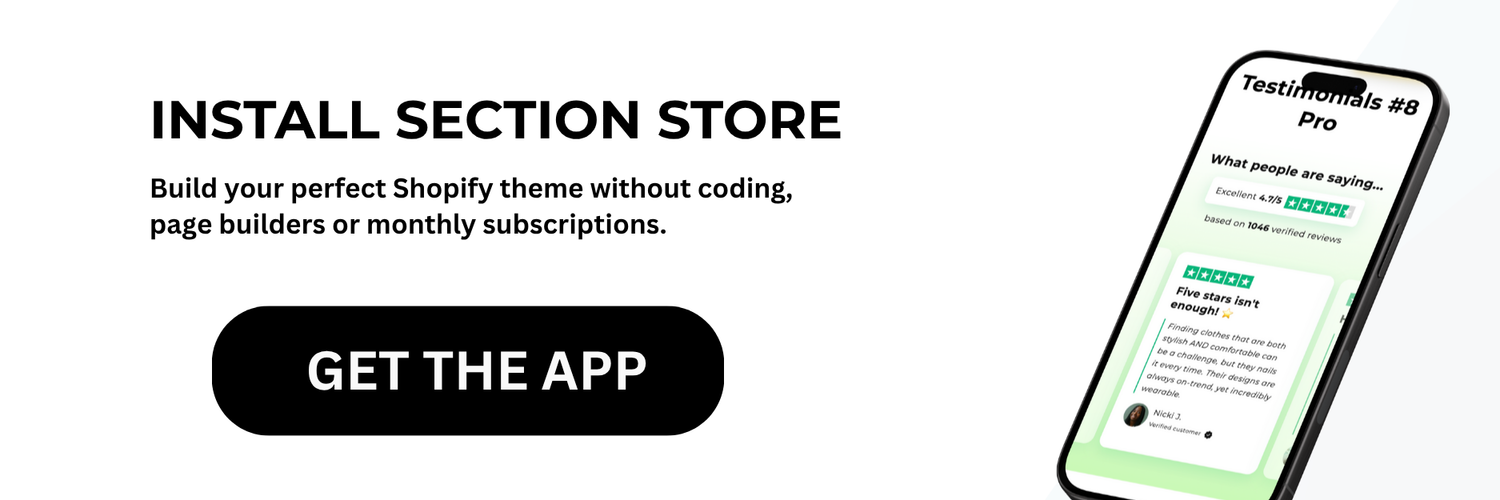The Psychology Behind High-Converting Shopify Landing Pages
What separates a high-converting Shopify landing page from a standard product page? The answer lies in understanding online shoppers' psychology. Your homepage is designed for browsing, while your landing page is built for a single action. This focus on conversion is what makes landing pages so effective.
They distill the customer journey to its most crucial element: getting the shopper to take the desired action. This targeted approach uses key psychological principles. Successful Shopify merchants understand the importance of scarcity. Highlighting limited-time offers or low stock creates urgency, encouraging immediate purchases.
Social proof, like testimonials and reviews, builds trust and reassures potential buyers. These elements work together to create a compelling reason for customers to convert.
Understanding the Difference Between Homepages and Landing Pages
Think of your homepage as a large department store. Visitors can wander and discover various products at their leisure. A landing page, however, is like a specialty shop, designed to showcase a specific item and encourage purchase. This targeted approach minimizes distractions and maximizes conversions.
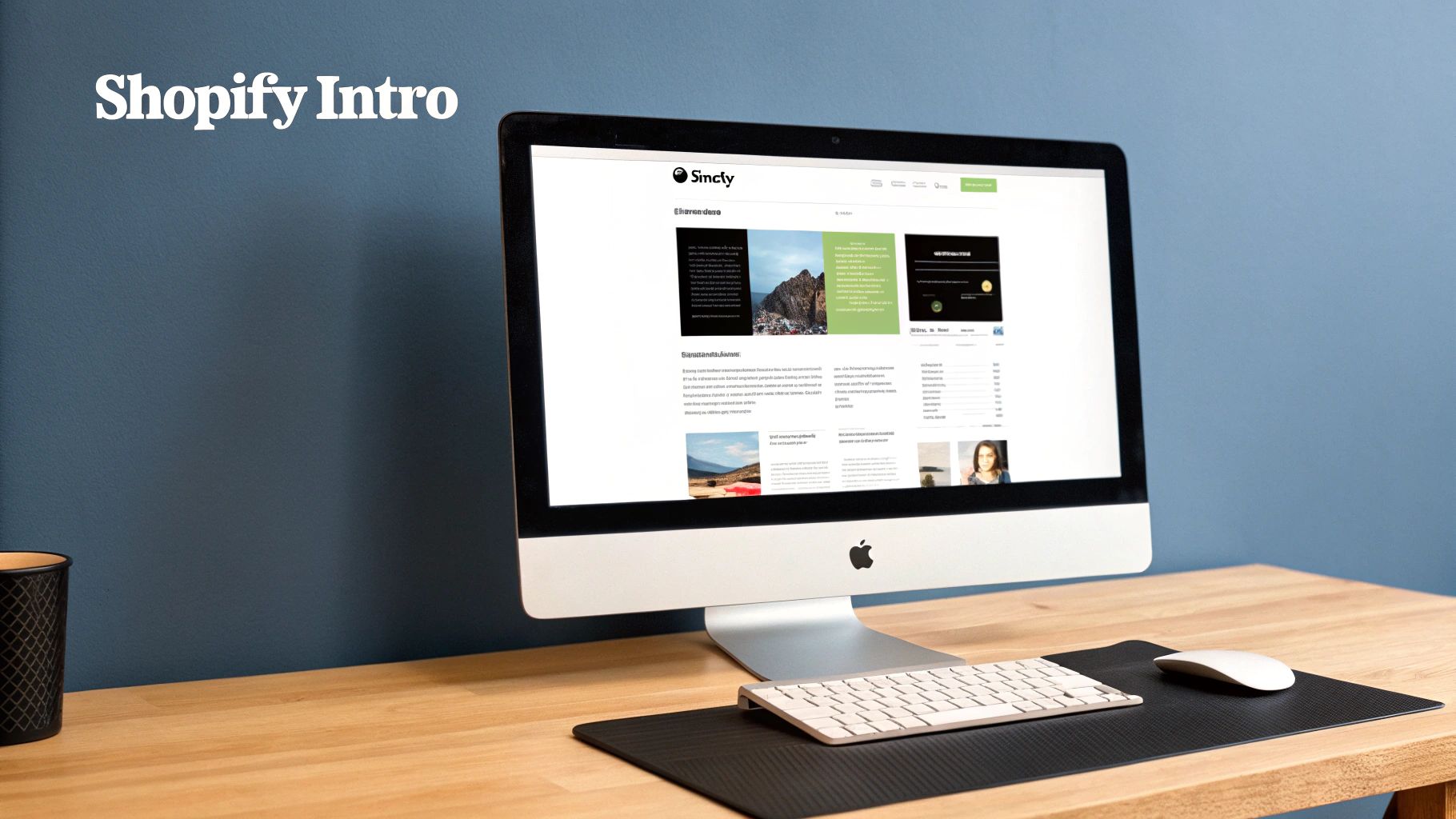
This isn't just about design; it’s a fundamental shift in strategy. It's about guiding the customer toward a specific outcome.
Leveraging Psychological Triggers for Conversions
Beyond scarcity and social proof, other psychological triggers can boost landing page performance. Authority, built through expert endorsements or partnerships, can sway hesitant buyers. Reciprocity, like offering a small gift for an email address, encourages further engagement.
Landing pages are crucial for digital marketing. The average landing page conversion rate is around 6.6%. Tracking the effectiveness of your Shopify landing pages requires specific tools. While Google Analytics can track visitor numbers, it doesn’t always connect those visits directly to Shopify sales.
Many businesses use conversion tracking codes or third-party apps to monitor sales generated by specific landing pages. This highlights the need for integrating analytics tools to optimize landing page performance on Shopify. Learn more about landing page statistics at Meetanshi.
Mobile Optimization: A Critical Factor
Optimizing your Shopify landing page for mobile devices is crucial. A smooth mobile experience is essential. Ensure your landing page is responsive and loads quickly on any device. This is vital for capturing conversions from mobile users. By understanding these psychological principles and adapting your Shopify landing page accordingly, you can significantly increase your conversion rates and drive sales.
Anatomy of Shopify Landing Pages That Actually Convert
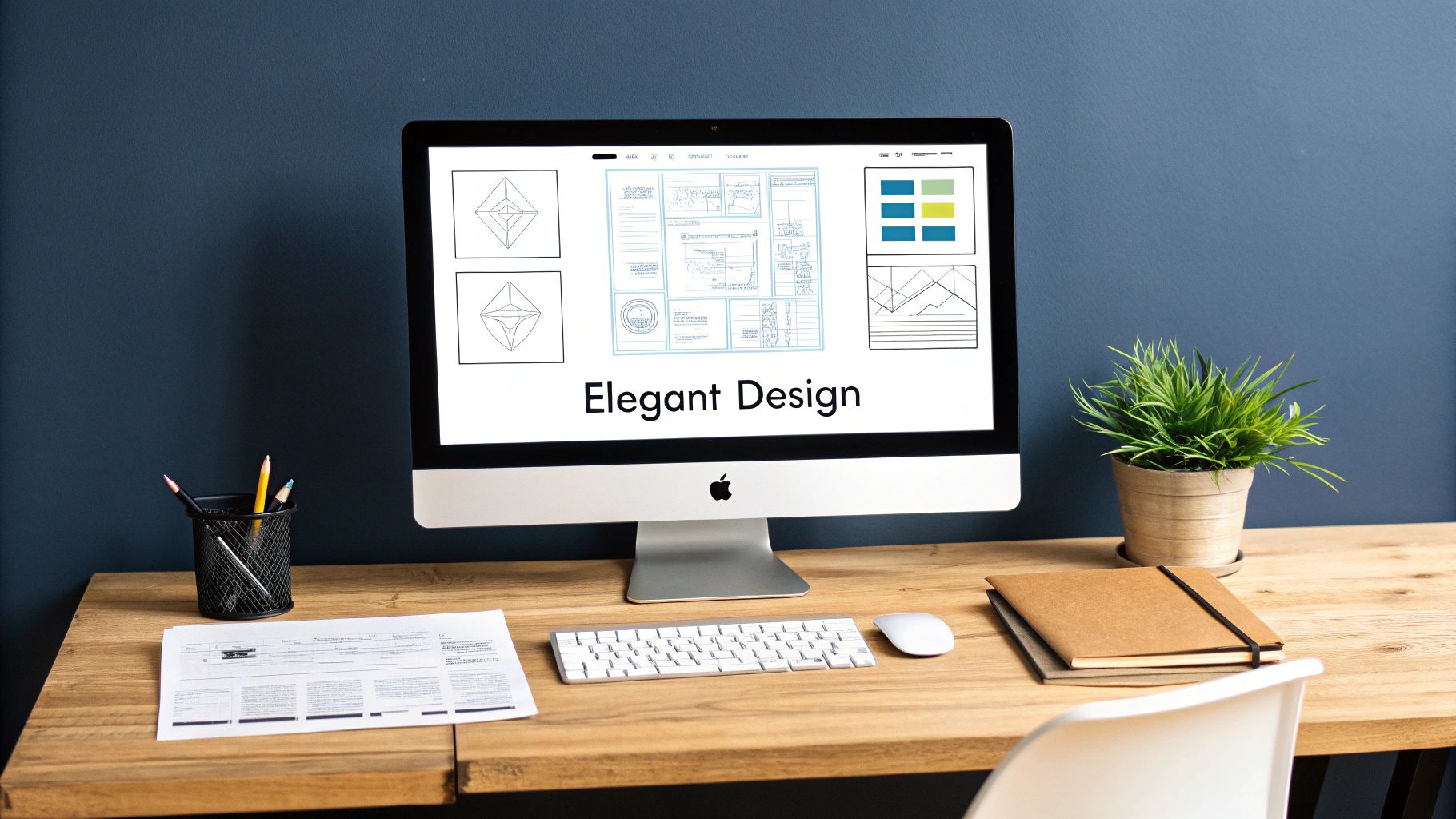
Let's explore the key components of high-performing Shopify landing pages. These elements work in concert, turning casual browsers into paying customers. We'll examine how each contributes to a smooth and persuasive user experience, crucial for building Shopify landing pages that truly convert.
Crafting Compelling Headlines and Product Descriptions
First impressions matter. A compelling headline instantly conveys your product's value. It should be clear, concise, and benefit-driven, capturing attention and enticing visitors to explore further. Think of it as your online storefront, drawing customers in.
Product descriptions should address specific customer pain points, showing how your product solves problems or improves lives. Instead of simply listing features, explain the tangible benefits they offer. This resonates with buyers and encourages purchases.
Strategic Call-to-Actions (CTAs) and Trust Elements
A clear and compelling call-to-action (CTA) guides the customer journey. The CTA button should be visually prominent, using action-oriented language like "Shop Now," "Get Your Free Trial," or "Learn More." Placement is key for maximizing conversions.
Trust elements, such as customer reviews, testimonials, and security badges, build credibility. Strategically placing these elements reassures buyers and eases purchase anxieties. Displaying security badges near the checkout, for example, boosts confidence during payment.
The Importance of Mobile Optimization
With most e-commerce traffic from mobile devices, mobile optimization is essential. This means a responsive page that loads quickly and is easy to navigate on smaller screens. A positive mobile experience is vital for conversions.
Slow loading leads to frustration and lost sales. A cluttered or confusing mobile layout can also deter purchases. Prioritize a streamlined, user-friendly mobile experience for maximum conversion potential.
Key Elements and Their Impact on Conversion
The following table shows how different landing page elements affect conversion rates based on e-commerce data. It provides a practical roadmap for optimizing your Shopify landing page.
| Page Element | Average Impact on Conversion Rate | Implementation Difficulty | Priority Level |
|---|---|---|---|
| Compelling Headline | High | Low | High |
| Clear CTA | High | Low | High |
| Mobile Optimization | High | Medium | High |
| Product Description | Medium | Medium | High |
| Customer Reviews | Medium | Medium | Medium |
| Security Badges | Low | Low | Medium |
| High-Quality Images | Medium | Medium | Medium |
By focusing on these core elements, you'll create Shopify landing pages that attract and convert visitors into loyal customers, driving sales and boosting your online business.
Building Blocks: Top Shopify Landing Page Solutions
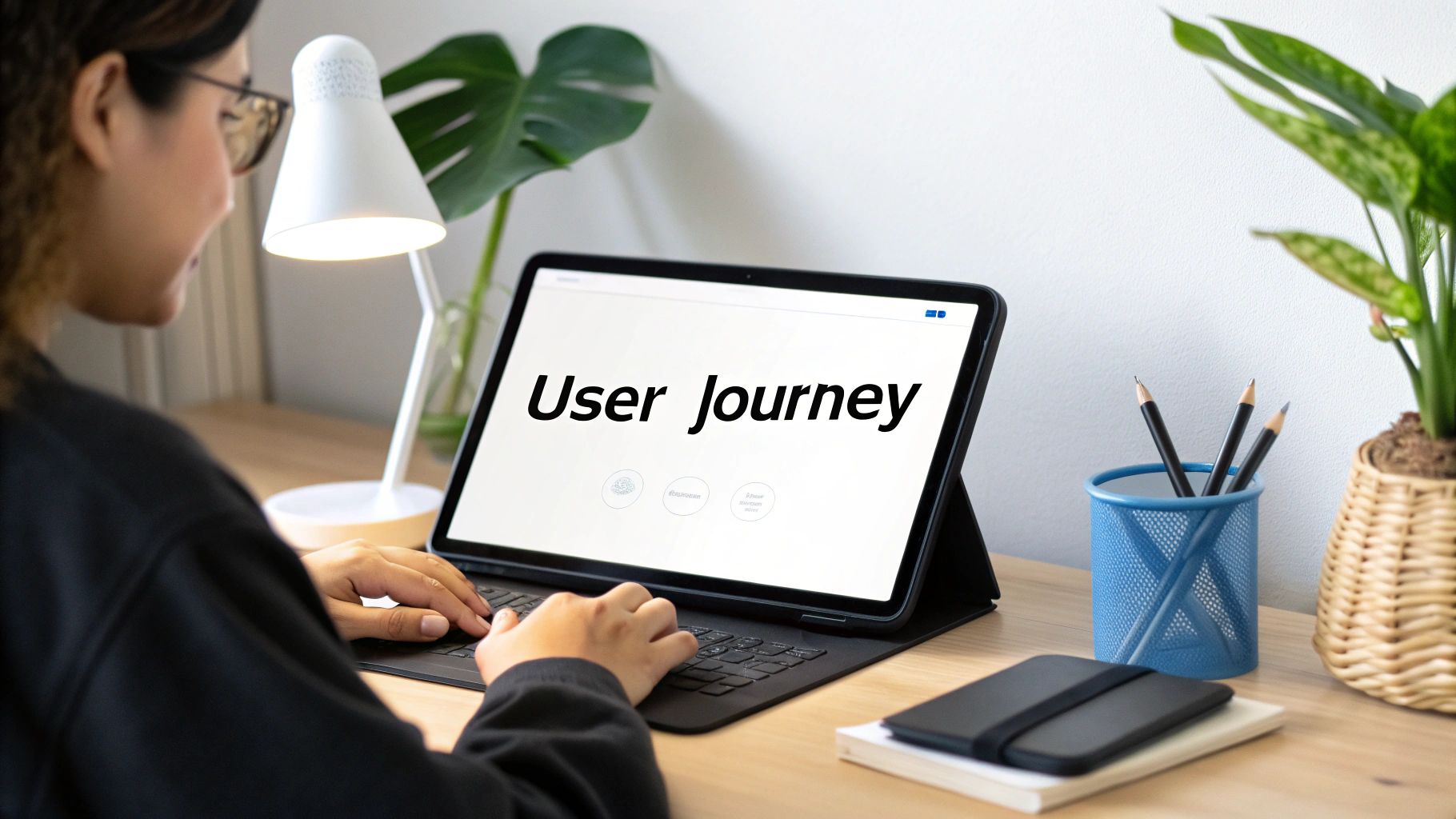
Choosing the right tools for your Shopify landing page is crucial. Your decision affects not only the design, but also the page's functionality and, ultimately, your conversion rates. Instead of feeling overwhelmed by the many options, let's explore some of the most effective solutions available within the Shopify ecosystem. These tools have proven themselves through positive merchant feedback and measurable results.
Shopify Landing Page Builders: Drag-and-Drop Power
Many Shopify landing page builders offer intuitive drag-and-drop interfaces. This makes creating and customizing pages easy, even without coding knowledge. These builders frequently include pre-designed templates, saving you time and effort. Popular options in the Shopify App Store, like PageFly and Shogun, provide a variety of features, from A/B testing to mobile optimization.
However, these builders typically come with a recurring monthly fee. For merchants with limited budgets, this expense can be a concern. This brings us to another practical solution: Shopify landing page templates.
Shopify Landing Page Templates: A Cost-Effective Approach
Shopify landing page templates are a budget-friendly alternative to page builders. Purchased for a one-time fee, they are often less flexible than builders but can be an excellent starting point, especially for simpler landing pages. They offer a pre-built structure that you can personalize with your branding and content.
This approach is particularly useful for time-sensitive campaigns or promotions. If you're running a limited-time offer, for example, a template can be quickly customized and deployed to match your promotion's theme.
Choosing The Right Solution For Your Business
The ideal solution for your Shopify landing page depends on your specific needs and business model. For a business with frequently changing products, a drag-and-drop builder offers the flexibility to create and update pages regularly. For a business with a smaller, more stable product catalog, a well-chosen template might be the more cost-effective option.
Consider your team's technical skills, as well. If you lack coding expertise, a builder's user-friendly interface can be invaluable. If you have in-house developers, they might prefer the control that comes with custom-coding a landing page.
Comparing Top Shopify Landing Page Solutions
To help you choose the best solution for your store, the table below compares key differences between popular Shopify landing page builders and templates. It summarizes features, pricing, and ideal use cases to guide your decision-making process.
Top Shopify Landing Page Solutions Compared A comparison of leading Shopify landing page builders and templates to help you choose the right one for your store
| Solution | Key Features | Price Range | Best For | Limitations |
|---|---|---|---|---|
| Page Builders | Drag-and-drop, A/B testing, mobile optimization | $20-$100/month | Stores with evolving product lines | Recurring cost |
| Templates | Pre-designed layouts, customizable | $50-$200 | Specific campaigns, limited budgets | Less flexibility than builders |
| Custom Coding | Full control, unique design | Varies | Businesses with in-house developers | Requires technical expertise |
This table highlights the strengths and weaknesses of each approach. While page builders offer flexibility, they come at a recurring cost. Templates offer a budget-friendly option but may lack the customization depth of builders. Custom coding gives maximum control but necessitates technical skills.
Finding the right tool for your Shopify landing page means balancing your budget, technical capabilities, and long-term goals. Making informed decisions paves the way for higher conversions and increased sales.
Visual Hierarchy: Design Principles That Drive Action
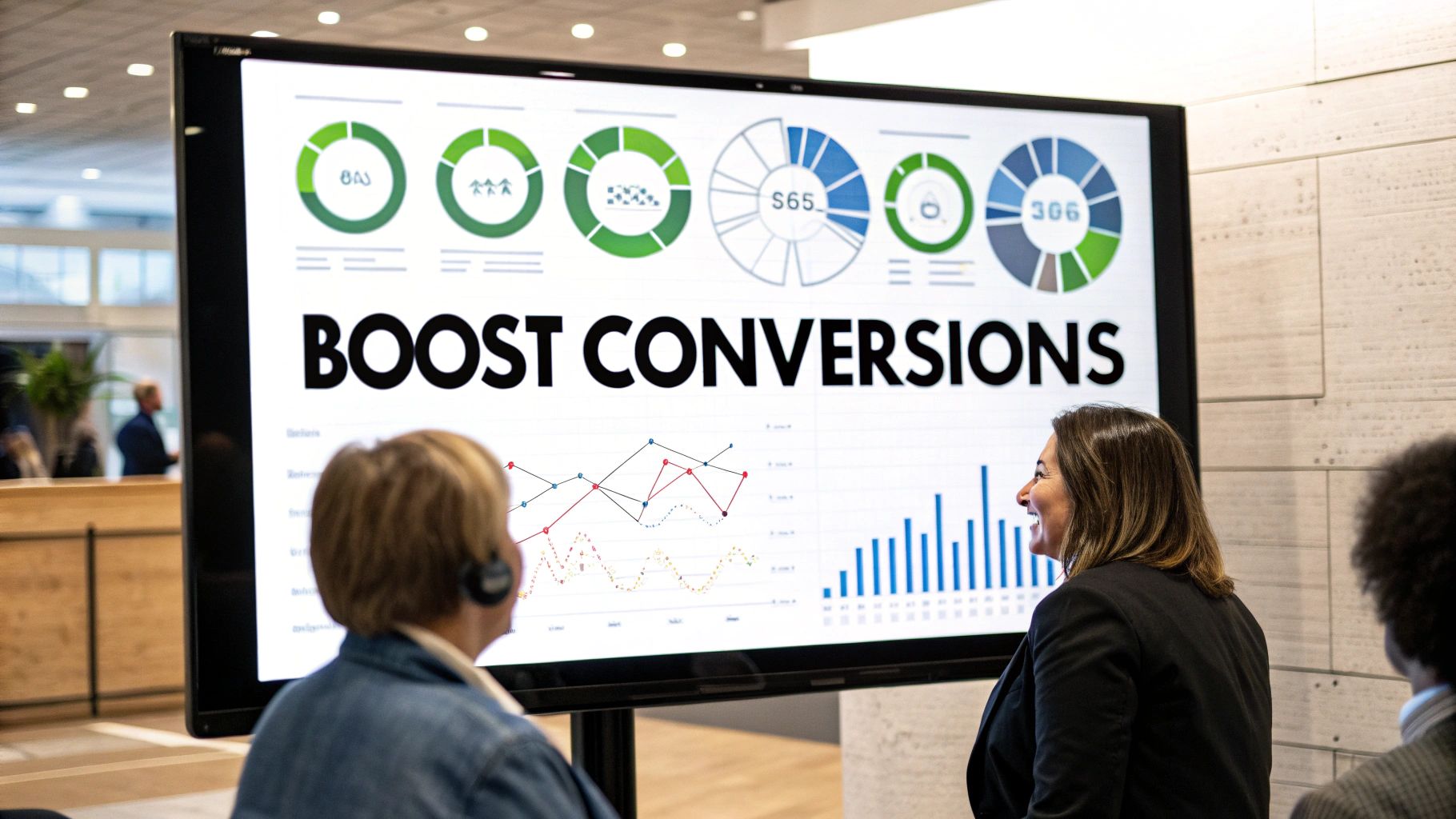
Effective Shopify landing page design is more than just aesthetics. It's about strategically guiding your customers toward taking a specific action. By understanding visual hierarchy, you can subtly influence how visitors interact with your page. You can draw their attention to key elements that encourage conversions. Let's explore how these design principles can transform your Shopify landing page from a simple product showcase into an active sales generator.
The Power of Color Psychology
Color has a profound impact on our emotions and behaviors. Choosing the right colors can significantly influence purchasing decisions. Warm colors like red and orange can create a sense of urgency, making them perfect for limited-time offers. Cooler colors, such as blue and green, evoke feelings of trust and tranquility. These are well-suited for brands emphasizing reliability and security. Consider how color can reinforce your brand identity and guide the customer journey when designing your Shopify landing page.
White Space: Breathing Room for Conversions
White space, also known as negative space, is a crucial design element. It provides visual breathing room, preventing your Shopify landing page from feeling cluttered. This improved readability and clarity make it easier for visitors to process information and find what they need. Managing white space effectively can significantly boost conversion rates by guiding the eye toward important elements, like your call to action (CTA).
Typography: The Art of Readable Persuasion
Typography affects both readability and brand perception. Clear, easy-to-read fonts ensure your message is easily understood. Font choices also subtly influence how your brand is perceived. A modern sans-serif font might convey innovation, while a classic serif font can project trustworthiness. Consistent and strategic typography on your Shopify landing page strengthens your brand identity and improves the user experience.
Directing Attention: The Hierarchy at Play
Visual hierarchy directs attention to the most important elements first. This is achieved through strategic use of size, color, contrast, and placement. A large, brightly colored CTA button will naturally draw more attention than a small, dull one. Prioritizing key elements like headlines, product images, and CTAs guides customers through the desired journey on your landing page.
Case Studies: Seeing is Believing
Examining before-and-after case studies of redesigned Shopify landing pages offers valuable insights. These real-world examples demonstrate how strategic visual changes directly influence buying behavior. Analyzing successful and unsuccessful redesigns provides lessons for optimizing your own Shopify landing page. Numerous online resources showcase these transformations, illustrating the power of visual hierarchy.
By implementing these design principles, you can create a visually appealing and strategically effective Shopify landing page. This will drive conversions and ultimately boost sales. It's not just about aesthetics; it's about a persuasive user experience seamlessly guiding customers towards taking action.
Words That Sell: Copywriting Mastery for Shopify Pages
The success of your Shopify landing page depends on more than just great visuals and a user-friendly design. Your choice of words plays a vital role in turning casual browsers into paying customers. This is the power of copywriting, and mastering it can dramatically boost your conversion rates. Let's explore how to write compelling copy for your Shopify landing pages.
Product Descriptions: Benefits Over Features
Focus on what your product does for the customer, not just its features. Instead of simply listing specifications, highlight the benefits. For instance, instead of "This jacket is made of waterproof material," try "Stay dry and comfortable in any weather with this waterproof jacket." This resonates with customers by addressing their needs and wants.
Headlines That Stop the Scroll
Your headline is your first, and often only, chance to make an impression. It needs to grab attention and communicate value instantly. Use strong verbs and benefit-driven language to draw visitors in. "Discover the Secret to Effortless Style" is much more compelling than "New Shoe Collection." This difference can significantly impact a visitor's decision to stay or leave.
Creating Urgency With Strategic Language
Subtly encourage quick action with words that create a sense of urgency. Phrases like "Limited-Time Offer," "Shop Now Before It's Gone," or "Don't Miss Out" can motivate immediate purchases. However, use these tactics carefully to maintain authenticity and avoid sounding pushy.
Adapting Messaging to Different Audiences
Tailor your copy to connect with specific customer groups. What works for one demographic might not work for another. Consider your target audience's needs, values, and pain points when writing. This personalized approach can significantly improve your Shopify landing page conversion rates.
The Power of Micro-Copy
Pay attention to the small details. Micro-copy, the short text on buttons, form labels, and checkout instructions, can have a big impact on conversions. Switching button text from "Submit" to "Get Instant Access" can make a real difference. These small changes can significantly enhance user experience and encourage desired actions.
Ready-to-Implement Copywriting Templates
Here are some templates to adapt for your Shopify landing page:
- Product Description: "Experience the [benefit] with our [product name]. Crafted with [key feature] to [benefit]."
- Call to Action: "Shop Now and [benefit]!" or "Get Your Free [offer] Today!"
- Headline: "[Benefit] with the [product name]" or "Discover the [benefit] of [product category]"
By mastering these copywriting techniques, you can turn your Shopify landing page into a powerful sales engine. Remember, the right words can be the key to success. Focusing on benefits, crafting compelling headlines, creating urgency, adapting messaging, and optimizing micro-copy are essential for maximizing conversions and boosting sales.
Continuous Improvement: A/B Testing Your Way to Success
The journey to a high-converting Shopify landing page is an ongoing process. The most successful Shopify merchants understand that optimization never truly ends. They continually refine their pages through A/B testing, a powerful technique that reveals what resonates with their target audience. This section explores how systematic testing can lead to dramatic conversion improvements. It provides a practical framework designed specifically for Shopify, guiding you toward optimization success.
Identifying Key Elements for A/B Testing on Shopify
Before diving into A/B testing, it's crucial to identify which elements of your Shopify landing page have the most significant impact on conversions. Start by analyzing your existing data. Look for areas where users hesitate or abandon their shopping carts.
- Headlines: Experiment with different wording, length, and phrasing that emphasizes benefits.
- Call-to-Action (CTA) Buttons: Test different colors, sizes, placement on the page, and the specific text used (also known as micro-copy).
- Product Images and Videos: Explore various angles, styles, and presentations of your products to see what captures attention most effectively.
- Product Descriptions: A/B test descriptions that focus on benefits versus those that highlight features.
- Layout and Design: Experiment with different page layouts, fonts, and the use of white space.
Prioritizing these key elements for your A/B tests will maximize their impact on your conversion rate. By concentrating on these high-impact areas, you can pinpoint what resonates with your audience and drives sales.
Setting Up A/B Tests: Parameters and Sample Sizes
A/B testing involves creating two versions of your Shopify landing page, each with a single variation. For example, you might test two different headlines while keeping all other elements identical. This isolates the impact of the headline and allows you to measure which version performs better.
Determining the appropriate sample size is essential for statistically significant results. A larger sample size provides more reliable data, but it takes more time to collect. Many A/B testing tools offer guidance on calculating the appropriate sample size based on your website traffic and the desired confidence level. This ensures that your test results are accurate and reliable.
Interpreting Results and Implementing Changes
Once your A/B test has run long enough, analyze the results. Look for statistically significant differences in conversion rates between the two versions of your landing page. If one version consistently outperforms the other, you have a winner! Implement the winning variation on your live Shopify landing page to begin benefiting from the improved conversion rate.
However, remember that A/B testing is not a one-time solution. It's an iterative process. Continuously monitor your results and identify new areas for testing. This constant optimization sets successful Shopify merchants apart and allows them to achieve consistently higher conversions and increased revenue.
A/B Testing Tools for Shopify
Several A/B testing tools integrate seamlessly with Shopify, simplifying the process of creating variations, tracking results, and implementing changes. Popular options include:
- Google Optimize: A free tool that integrates well with Google Analytics.
- AB Tasty: A more advanced platform offering personalized experiences. Visit AB Tasty
- Optimizely: A comprehensive platform with robust testing features. Visit Optimizely
Choosing the right tool depends on your specific needs and budget. Many tools offer free trials or freemium plans, allowing you to explore their features before committing.
Merchant Case Studies: Inspiration and Proof
Numerous case studies showcase how seemingly small changes to Shopify landing pages can substantially impact revenue. For instance, one clothing store discovered that changing the color of its CTA button from green to orange increased conversions by 15%. Another Shopify merchant found that adding customer testimonials boosted sales by 20%. These real-world examples illustrate the potential of A/B testing, demonstrating how minor tweaks can lead to significant improvements.
Boost your Shopify store's conversions with pre-made sections that work on any theme. Visit Section Store today and add high-converting sections to your store for a low one-time fee!



